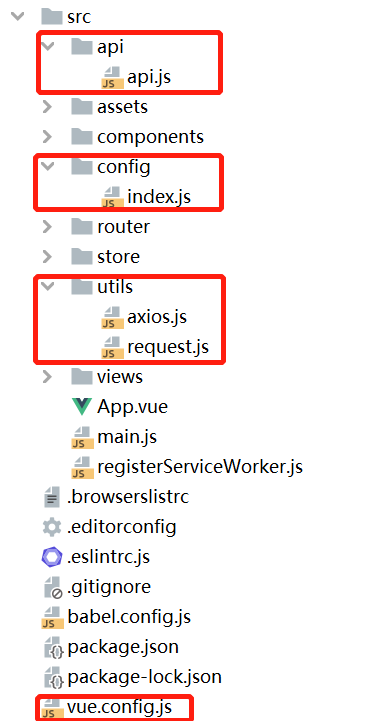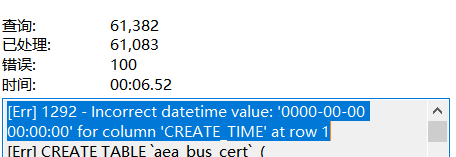1、目录结构

2、配置
2.1 vue.config.js
用@代替/src这个目录,避免写错路径
const path = require('path')
const resolve = dir => {
return path.join(__dirname, dir)
}
module.exports = {
devServer: {
open: true,
host: 'localhost',
port: 8080,
https: false,
hotOnly: false,
disableHostCheck: true,
proxy: {
// 配置跨域
'/api': {
target: 'http://localhost:8000/',
ws: true,
changOrigin: true,
pathRewrite: {
'^/api': ''
}
}
},
before: app => { }
},
chainWebpack: config => {
// key,value自行定义
config.resolve.alias.set('@', resolve('src'))
}
};
2.2 config.js
export default {
// 配置显示在浏览器标签的title
title: '沉潜',
// token在Cookie中存储的天数,默认1天
cookieExpires: 1,
// 是否使用国际化,默认为false 如果不使用,则需要在路由中给需要在菜单中展示的路由设置meta: {title: 'xxx'} 用来在菜单中显示文字
useI18n: true,
// api请求基础路径
baseUrl: {
dev: 'http://localhost:8000/',
pro: 'https://xxx.com/api/'
},
// 默认打开的首页的路由name值,默认为home
homeName: 'home',
// 需要加载的插件
plugin: {
'error-store': {
// 设为false后不会在顶部显示错误日志徽标
showInHeader: true,
// 设为true后在开发环境不会收集错误信息,方便开发中排查错误
developmentOff: true
}
}
}2.3 request.js
import HttpRequest from '@/utils/axios'
import config from '@/config'
const baseUrl = process.env.NODE_ENV === 'development' ? config.baseUrl.dev : config.baseUrl.pro
const axios = new HttpRequest(baseUrl)
export default axios2.4 axios.js
import axios from 'axios'
class HttpRequest {
constructor (baseUrl) {
this.baseUrl = baseUrl
this.queue = {}
}
getInsideConfig () {
const config = {
baseURL: this.baseUrl,
headers: {
Authorization: ''
}
}
return config
}
destroy (url) {
delete this.queue[url]
if (!Object.keys(this.queue).length) {
// Spin.hide()
}
}
interceptors (instance, url) {
// 请求拦截
instance.interceptors.request.use(config => {
// 添加全局的loading...
if (!Object.keys(this.queue).length) {
// Spin.show() // 不建议开启,因为界面不友好
}
this.queue[url] = true
return config
}, error => {
return Promise.reject(error)
})
// 响应拦截
instance.interceptors.response.use(res => {
this.destroy(url)
const { data } = res
if (typeof data === 'object') {
// 自己处理
}
return data
}, error => {
this.destroy(url)
let errorInfo = error.response
if (!errorInfo) {
const { request: { statusText, status }, config } = JSON.parse(JSON.stringify(error))
errorInfo = {
statusText,
status,
request: { responseURL: config.url }
}
console.log(errorInfo)
}
return Promise.reject(error)
})
}
request (options) {
const instance = axios.create()
options = Object.assign(this.getInsideConfig(), options)
this.interceptors(instance, options.url)
return instance(options)
}
}
export default HttpRequest2.5 api.js
import axios from '@/utils/request'
export const insert = (data) => {
return axios.request({
url: '/insert',
method: 'post',
data
})
}
export const update = (data) => {
return axios.request({
url: '/update',
method: 'post',
data
})
}
export const getList = (params) => {
return axios.request({
url: '/getList',
method: 'get',
params
})
}3、使用
import { getList, update } from '@/api/api'
test () {
getList({ limit: 10, offset: 1 }).then(res => {
if (res.status === 200) {
console.log(res)
}
})
update({ name: '沉潜', userId: 1 }).then(res => {
if (res.status === 200) {
console.log(res)
}
})
}









